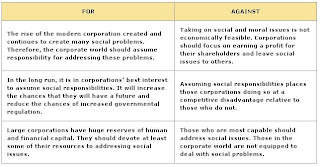JPC vs PAC
Parliament is the chief communication link between the government and the people. Close contact and an intimate rapport between the two is the quintessence of parliamentary democracy. Parliament belongs to the people and not to MPs or parties. People must have access to Parliament. Unfortunately, there is a tremendous disconnect between the two. Things get worse when both Houses do not function and are shut against the people.
· Clearly, both the government and the Opposition are equally responsible for the ugly impasse. There was an unnecessary, illegitimate and irrational tug of war in the name of the people. But the people are nowhere in the picture. As usual, on both sides, political considerations and calculations of gain and loss have the upper hand. Perhaps, there is an unsaid long-term political concern before the government and the Opposition. Both are eyeing the 2014 general elections. The Opposition would like to drag the matter on through the JPC device and the Congress feared a repeat of what happened to it after the JPC on Bofors.
· Opposition felt that the JPC canvas could be vast while PAC probe would be limited in nature and the Ministers could not be summoned before it.
· If the Opposition was anxious to question the Prime Minister and nail his responsibility, the Lok Sabha was the more effective and legitimate forum than a JPC. However, in a JPC, proceedings are in camera.
Committees
The device of parliamentary committees is intended to assist the Houses of Parliament in the efficient discharge of their functions. There are two types of Parliamentary Committees in India: Standing Committees and Ad hoc Committees.
· Standing Committees are constituted by the House or the Speaker every year or from time to time and are permanent in nature.
o Include the Financial Committees and Departmentally Related Committees.
· Ad hoc Committees are appointed for a specific purpose. Ad hoc committees may be Select or Joint Committees or those constituted to report on specific matters.
· A committee which consists of members of both Houses is a Joint Committee. The Standing Financial Committee called the Public Accounts Committee (PAC) is also a joint committee inasmuch as the Rajya Sabha MPs are also associated with it. All the Departmentally Related Standing Committees are Joint Committees.
· Both Houses of Parliament have inherent powers to appoint special committees under special circumstances to examine and inquire into specific issues and report to the Houses. Ad hoc joint committees of both Houses have been constituted from time to time on various matters. Technically, these were JPCs. It is, therefore, not correct to say that the JPC on Bofors was the first JPC or that there have been only four JPCs so far. Also, it is incorrect to say that the four JPCs were total failures. A committee can only inquire and make recommendations. It is for Parliament to discuss them and for the government to accept them and take appropriate action.
Joint Parliamentary Committee
· After Bofors, the nomenclature JPC has in practice come to connote an ad hoc joint committee of both Houses formed for inquiring into a specific scandal of financial wrong doing. A distinctive feature of such committees is their investigatory role.
· A joint committee may be appointed on a motion adopted by the two Houses and may contain the names of its members. It may also be appointed by the Speaker of Lok Sabha and the Chairman of the Rajya Sabha after mutual consultation.
· Members of some Standing Committees including the Public Accounts Committee are elected according to the system of proportional representation by means of single transferable vote. This may be so even in the case of some ad hoc committees.
· But even if the committees are constituted by the presiding officers, proportional representation of parties is kept in view and the numbers in committees represent the party position in the Houses, i.e. by and large the ruling party or parties remain in majority in the committees as well.
· In parliamentary committees, the effort always is to function on non-party lines. Decisions are taken unanimously or by consensus but the rules provide for all questions at any sitting of a committee being taken “by a majority of votes of the members present and voting.” On crucial issues involving party susceptibilities, therefore, it would not be easy for the Opposition to have its way against the government. It may be, therefore, wrong for the Opposition to believe that they would be able to compel the presence of the Prime Minister or other Ministers before the JPC. The majority in the committee may overrule such suggestions. Also, under the rules, the question may be “referred to the Speaker whose decision shall be final.”
· In the PAC, a minister is not called before it to give evidence or for consultation in connection with the examination of accounts. A minister may appear before it if the Chairman agrees. Also it can be so arranged between the Speaker, the Committee Chairman and the minister concerned that he appears on his own.

Comments
Post a Comment